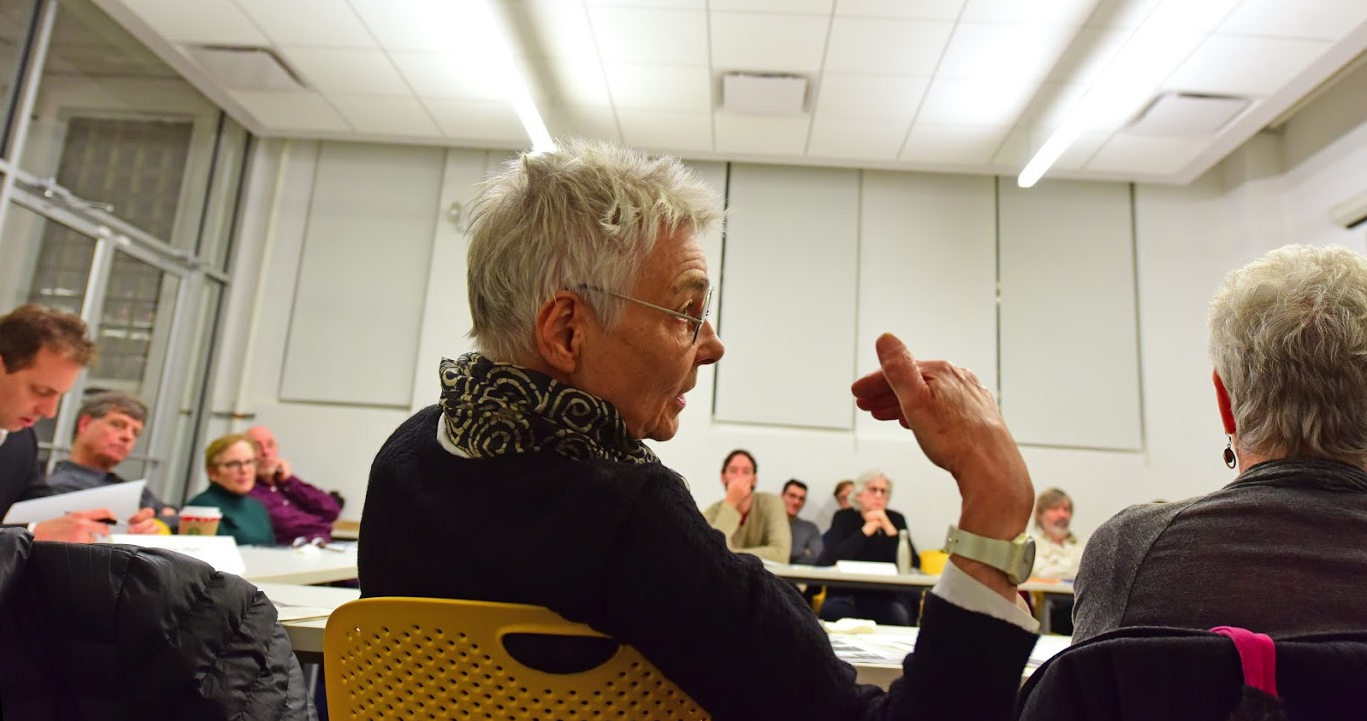
New report suggests Pier 6 tower project could present construction challenges
Brooklyn Bridge Park Community Advisory Council Hears Report from CUNY Professor on Possible Soil and Foundation Issues

A new wrinkle appeared in the decade-long battle between neighborhood associations and the Brooklyn Bridge Park Corporation over the construction of two residential towers in Brooklyn Heights’ Pier 6 as the Brooklyn Bridge Park Community Advisory Council hosted CUNY Distinguished Professor Emeritus of biomedical and mechanical engineering Sheldon Weinbaum to discuss potential problems in the soil beneath the proposed structures.
Weinbaum pointed out that he lives at 1 Brooklyn Bridge Park, next to the proposed building site.
“When I first learned [of the towers’ proposed location] I was alarmed,” Weinbaum told the council. Citing construction of the nearby Brooklyn Bridge, which also failed to reach bedrock to support its towers and using instead a caisson containing 3,000 tons of concrete, he continued: “I knew the bedrock must be very deep in this area.”
Using San Francisco’s Millennium Tower as an example, Weinbaum went on to outline the problems inherent to stabilizing large structures without bedrock: “This won’t be like typical construction in Manhattan where buildings are attached to bedrock. These require friction piles to anchor in the weak soil.”
Built on a surface Weinbaum alleges is similar to the Pier 6 site and completed in 2009, the Millennium Tower has become notorious for sinking and tilting, reaching a total of sixteen inches off-center according to a New York Times article Weinbaum passed around to the council.
“There is a non-uniformity of soil underneath the Millenium,” he explained. “In some places, it’s weaker.”
Weinbaum argued a similar problem would befall construction on the scale envisioned for the Pier 6 towers. “Both lots are designated tidal wetlands, which is just sand and silt,” he said. Attempting to obtain copies via the Freedom of Information Act of soil testing done in 2015 by the NYC Department of Buildings (DOB), Weinbaum complained of being stonewalled until a letter he had written to Mayor Bill de Blasio warning of dire consequences should the project proceed as planned was made public by the New York Times. The DOB soil report was finally made public in late October.
“The report itself is very damaging,” Weinbaum said. “Six holes were drilled in the summer of 2015. Five holes went down 60 feet and found only soil and dirt. The sixth went 90 feet and found bedrock in one corner … The worst thing you can do is go down and you hit bedrock on one side. This project needs to be more closely examined.”
Not everyone agreed with the professor’s analysis.
“Have you ever designed a building?” demanded David Lowin, interim president of the Brooklyn Bridge Park Corporation.
Weinbaum admitted that he had not.

“The buildings department of New York City has a whole department full of engineers,” Lowin continued, “and regulations that are dozens and dozens of pages that include buildings that are built on tidal wetlands … This [the lack of a bed rock foundation] is being presented here as something that’s unique, when it’s really quite common.”
Lowin went on to reject comparisons with the situation in San Francisco: “People are trying to frame things that are happening exactly according to code … as something out of the ordinary.” He went to point out that the Times article had suggested the San Francisco Department of Buildings was ill-equipped to evaluate a building on the scale of the Millennium. “That’s not a problem here in New York City,” Lowin concluded. “Here we have a robust building code.”

Since 2005, when the Pier 6 towers were first proposed, community groups and elected officials have raised numerous objections — from obstructing views, to overfilling local schools, road closures, interference with storm water run-off, funding and tax abatement issues and percentages of affordable versus luxury housing.
No one present at the meeting could remember any previous reference to the soil at Pier 6 or its suitability to maintain structures of that magnitude. If Weinbaum’s analysis is correct, however, then the towers — as currently envisioned — could present unique construction challenges.
Leave a Comment
Leave a Comment

